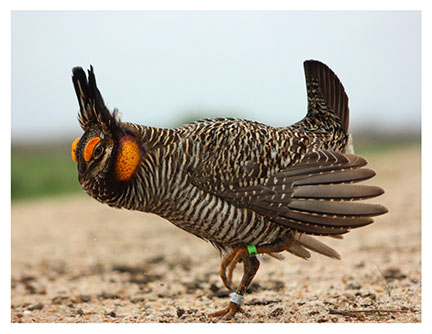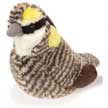


The Attwater's Prairie Chicken (Tympanuchus cupido attwateri) is a brown henlike bird of the prairies, heavily barred. They are part of the grouse family. The dancing male inflates orange air sacs on the side of the neck. Males in the spring make a hollow booming sound. The dancing ritual is called booming.
These birds are about 17 inches long and weigh about 25 to 42 ounces. The tail is short and rounded. Females are smaller and lack the orange neck patches and comb feathers. They are strong fliers and can fly up to 50 mph.
The diet consists primarily of seeds and fruit, but during the summer it also eats green plants and insects such as beetles, grasshoppers, and crickets.
You'll find the Attwater's Prairie Chicken only in parts of Texas. They prefer tall grass prairies. They were once abundant but now are extremely rare.
The nest is a grass-lined hollow among the grass. There are usually from 7 to 17 olive spotted eggs. There can be as many as 21. The eggs take between 23 and 24 days to hatch. There are between five and 10 young per brood. The young are raised by the female and fledge in one to four weeks. They are completely independent by the tenth to twelfth week. They reach sexual maturity by age one.
Attwater's Prairie Chickens have a lifespan of 2 to 3 years. There are a variety of predators including hawks, coyotes and owls. The nests are robbed by snakes, coyotes, raccoons, crows and badgers.
Wild Republic used to have the Attwater's Prairie Chicken in their Audubon Bird series, but it has been discontinued. The image at right is what that bird looked like.
Photo of Attwater's Prairie Chicken at top by Mandy Bellamy/USFWS.

